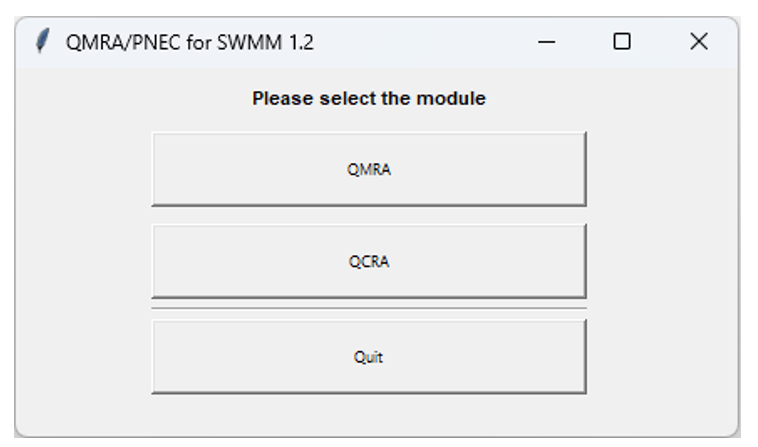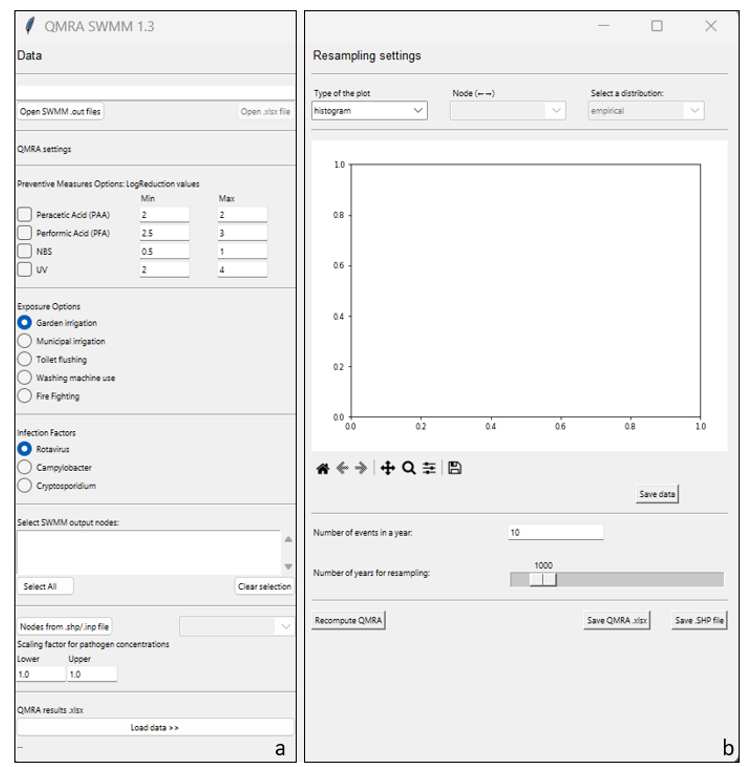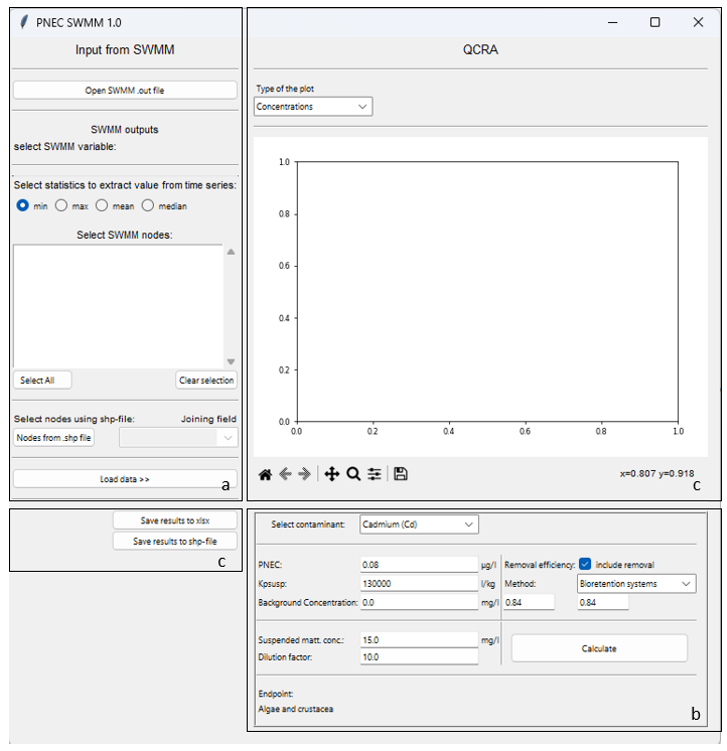UNIVPM is the lead of Work Package 5 (WP5 - Risk management tool & guidance for decision making) of WATERUN project, which aims at developing a new methodology for stormwater management based on a risk assessment (Quantitative Microbial Risk Analysis - QMRA and Quantitative Chemical Risk Analysis - QCRA).
Particularly, during the last months, a beta version of the risk-based Decision Support System (DSS) and mapping tool has been developed to support stakeholders in the decision-making process by evaluating health and environmental risks during stormwater reuse and management. The risk based DSS is based on the integration of different software and mathematical tools that include:
- Storm Water Management Model (SWMM) US EPA, which allows the modelling of urban runoff in a selected urban catchment calibrated using empirical data collected during monitoring campaigns;
- A phyton code able to collect and elaborate output data produced by the SWMM model with the aim to perform quantitative microbial risk assessment (QMRA) and quantitative chemical risk assessment (QCRA);
- An open-source GIS software, which can be fed with outputs produced by the phyton tool, and that allows a simplified communication of elaborated results to interested stakeholders.
A Guide User Interface (GUI) will assist the user to calculate microbial and chemical risk and to evaluate the reduction of the health-risk after the implementation of different preventive measures (i.e.; Peracetic Acid (PAA), Performic Acid (PFA), NBS, UV) to treat stormwater and remove pathogens/chemicals (Figure 1).

Figure 1: Graphical user interface (GUI) of the QMRA calculation tool
A specific GUI for QMRA and QCRA calculation assist user to define boundaries and conditions of the risk analysis for the selected reuse application or management of urban run-off water.
Particularly, the QMRA tool is mainly divided into two windows:
- in the window on the left all input data must be entered/selected by the user (Figure 2 - a);
- in the window on the right, it is possible to check results in graphical form and download them as excel files and as SHP files (Figure 2 - b). In addition, the size of Monte Carlo simulation can be selected.

Figure 2: Graphical user interface (GUI) of the QMRA calculation tool
The QCRA tool is mainly divided into three windows:
- in the left window all input data must be entered/selected by the user (Figure 3 - a);
- in the bottom right window, all the data needed for QCRA calculation can be entered and defined (Figure 3 - b)
- in the top right screen, it is possible to visualize results in graphical form and download them as excel files and as SHP files (Figure 3 - c).

Figure 3: Graphical user interface (GUI) of the QCRA calculation tool
The Deliverable 5.2, submitted by UNIVPM, represents a user guide document that explains step by step the utilization of the phyton risk-assessment tool and its integration with SWMM and GIS software. Example of input files are provided to facilitate the execution of the phyton tools and its integration with SWMM and GIS software.
Authors:
Francesco Fatone, Università Politecnica Delle Marche, f.fatone@univpm.it ; Anna Laura Eusebi, Università Politecnica Delle Marche, a.l.eusebi@univpm.it ; Massimiliano Sgroi, Università Politecnica Delle Marche, m.sgroi@univpm.it ; Lucia De Simoni, Università Politecnica Delle Marche, l.desimoni@pm.univpm.it ; Debora Jareta magna, Università Politecnica delle Marche, debora.jaretamagna@phd.unict.it ; Bartosz Zelag, Kielce University of Technology, bartoszszelag@op.pl ; Adam Kiczko, Warsaw University of Life Sciences, adam_kiczko@sggw.edu.pl
24/10/2024